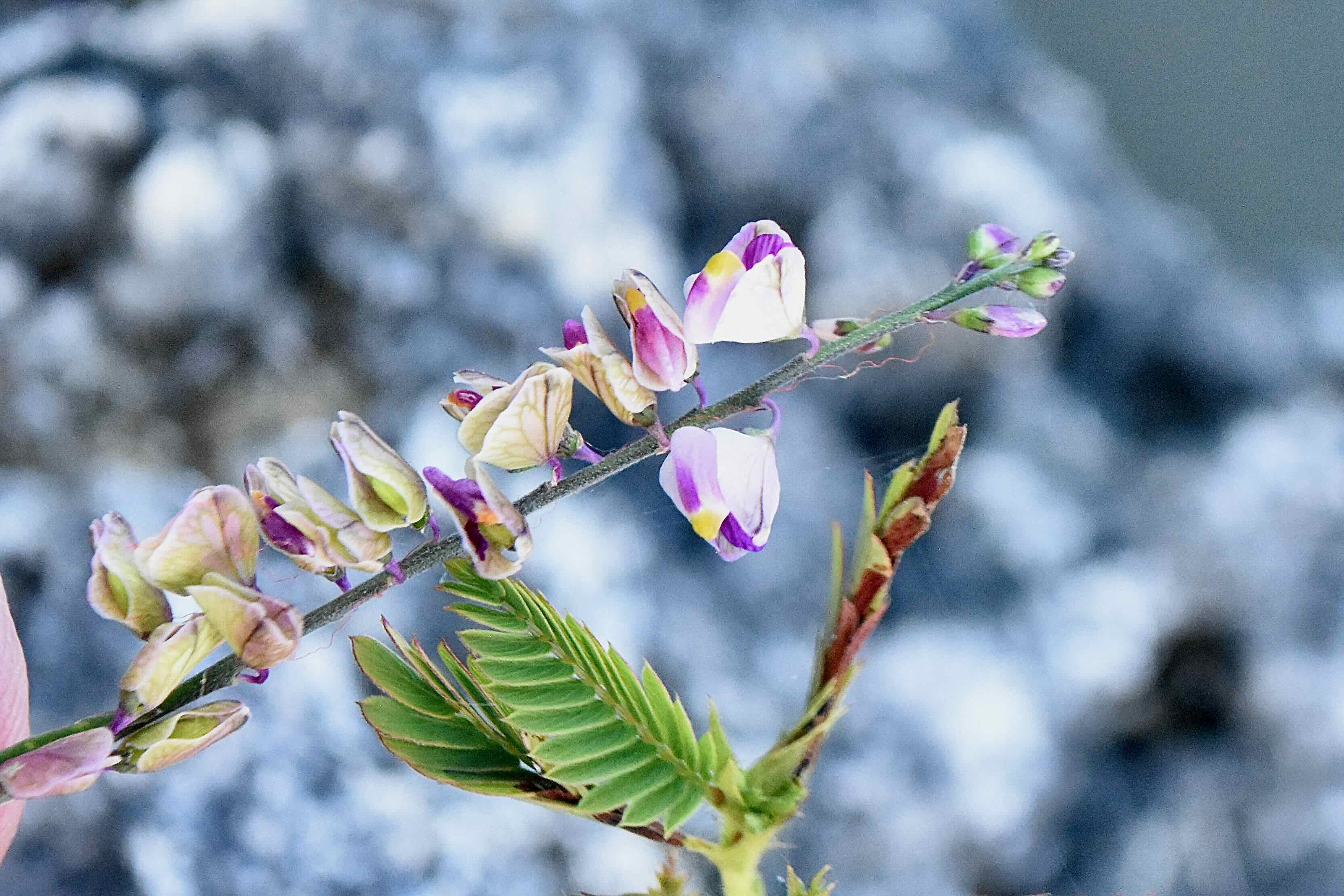
Showy milkwort, photographed at Sweetbay Natural Area, Palm Beach Gardens, Palm Beach County, in February 2020.
Showy milkwort, Asemeia violacea, is a whisp of plant, short, thin and spare in foliage. Its flowers are also small, but they pack a punch way above their weight class, so to speak.
It’s a Florida native, found in every one of the state’s 67 counties. Its range extends as far north as North Carolina and as far west as Louisiana. Showy Milkwort also is found in parts of the Caribbean, Central America and South America.
Showy milkwort stands no more than a foot tall. The leaves are about an inch long and arranged alternately along the stem; they can vary widely in shape but are generally linear to elliptical in shape. The stems and the undersides of the leaf can have a few hairs.
Up north, showy milkwort blooms in summer and fall; in more southern parts of it range, including South Florida, it can bloom year round. It’s generally an annual plant, but can be a perennial in warmer climates.
Favorite habitats include open pinelands where the plants can get plenty of sunlight. It’s also found in “disturbed” areas. It is fairly drought-tolerant.

By far, the flowers are the most outstanding physical feature of showy milkwort and the part that earns the “showy” moniker. They’re almost orchid-like in their delicate beauty — they have a “winged” look from two sepals — the parts of the flower that enclose petals before the flower blooms. They’re pink to lavender in color, with a bright yellow tip. They’re not large in the scheme of things but they are larger than those of other milkworts.
The fruit is a small brown seed capsule. And speaking of the seeds, they come with a “food body” or elaiosome that’s packed with fats and protein. These food bodies attract ants, who cart away the seeds, eat the fats and protein and discard the remainder outside their nest. It’s a way of “bribing” ants into dispersing the seeds, and it’s common to most, if not all, milkworts. (Note: We've come across research on Small's milkwort, a cousin, that found that what were thought to be elaiosomes were just empty shells instead. Which puzzled scientists because ants were still hauling them to their nests anyway. We don't know if similar research has been done on other milkworts, including our guy, showy milkwort.)
Showy milkwort until fairly recently was known scientifically as Polygala violacea. After DNA studies in 2012, taxonomists — the scientists who classify living things — moved it to the Asemeia genus and rechristened it A violacea. You'll still see the old name in many references. It’s still a member of the milkwort family, Polygalaceae.
Milkworts get their name because it once was common belief that the presence of these plants indicated a good spot to graze cows. Polygala is a mashup of two Latin words meaning many (poly) milk (gala).
Sweetbay Natural Area



